 W
WThe Allais effect is the alleged anomalous behavior of pendulums or gravimeters which is sometimes purportedly observed during a solar eclipse. The effect was first reported as an anomalous precession of the plane of oscillation of a Foucault pendulum during the solar eclipse of June 30, 1954 by Maurice Allais, a French polymath who went on to win the Nobel Prize in Economics. Allais reported another observation of the effect during the solar eclipse of October 2, 1959 using the paraconical pendulum he invented. This study earned him the 1959 Galabert Prize of the French Astronautical Society and made him a laureate of the U.S. Gravity Research Foundation for his 1959 memoir on gravity. The veracity of the Allais effect remains controversial among the scientific community, as its testing has frequently met with inconsistent or ambiguous results over more than five decades of observation.
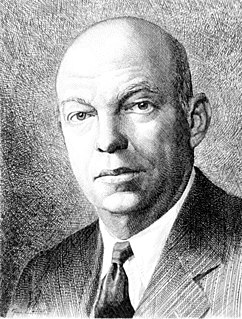 W
WEdwin Howard Armstrong was an American electrical engineer and inventor, who developed FM radio and the superheterodyne receiver system. He held 42 patents and received numerous awards, including the first Medal of Honor awarded by the Institute of Radio Engineers, the French Legion of Honor, the 1941 Franklin Medal and the 1942 Edison Medal. He was inducted into the National Inventors Hall of Fame and included in the International Telecommunication Union's roster of great inventors.
 W
WEmile Berliner originally Emil Berliner, was a German-American inventor. He is best known for inventing the lateral-cut flat disc record used with a gramophone. He founded the United States Gramophone Company in 1894; The Gramophone Company in London, England, in 1897; Deutsche Grammophon in Hanover, Germany, in 1898; and Berliner Gram-o-phone Company of Canada in Montreal in 1899.
 W
WThe Bone Wars, also known as the Great Dinosaur Rush, was a period of intense and ruthlessly competitive fossil hunting and discovery during the Gilded Age of American history, marked by a heated rivalry between Edward Drinker Cope and Othniel Charles Marsh. Each of the two paleontologists used underhanded methods to try to outdo the other in the field, resorting to bribery, theft, and the destruction of bones. Each scientist also sought to ruin his rival's reputation and cut off his funding, using attacks in scientific publications.
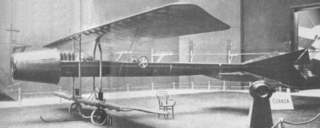 W
WThe Coandă-1910, designed by Romanian inventor Henri Coandă, was an unconventional sesquiplane aircraft powered by a ducted fan. Called the "turbo-propulseur" by Coandă, its experimental engine consisted of a conventional piston engine driving a multi-bladed centrifugal blower which exhausted into a duct. The unusual aircraft attracted attention at the Second International Aeronautical Exhibition in Paris in October 1910, being the only exhibit without a propeller, but the aircraft was not displayed afterwards and it fell from public awareness. Coandă used a similar turbo-propulseur to drive a snow sledge, but he did not develop it further for aircraft.
 W
WCold fusion is a hypothesized type of nuclear reaction that would occur at, or near, room temperature. It would contrast starkly with the "hot" fusion that is known to take place naturally within stars and artificially in hydrogen bombs and prototype fusion reactors under immense pressure and at temperatures of millions of degrees, and be distinguished from muon-catalyzed fusion. There is currently no accepted theoretical model that would allow cold fusion to occur.
 W
WFrederick Albert Cook was an American explorer, physician, and ethnographer who claimed to have reached the North Pole on April 21, 1908. That was nearly a year before Robert Peary, who similarly claimed to have reached the North Pole on April 6, 1909. Both men's accounts have been disputed ever since. His expedition was the first, and the only one with a United States national, to find a previously unknown, to people of European descent, North American Arctic island, Meighen Island.
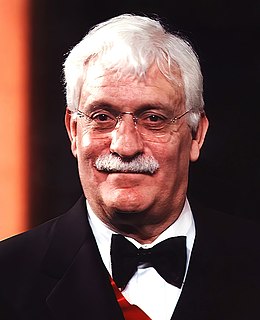 W
WRaymond Vahan Damadian is an American physician of Armenian descent, medical practitioner, and inventor of the first MR Scanning Machine.
 W
WLancelot Eldin "Lance" de Mole CBE, was an Australian engineer and inventor.
 W
WThe Dean drive was a device created and promoted by inventor Norman Lorimer Dean (1902–1972) that he claimed to be a reactionless drive. Dean claimed that his device was able to generate a uni-directional force in free space, in violation of Newton's third law of motion from classical physics. His claims generated notoriety because, if true, such a device would have had enormous applications, completely changing human transport, engineering, space travel and more. Dean made several controlled private demonstrations of a number of different devices; however, no working models were ever demonstrated publicly or subjected to independent analysis and Dean never presented any rigorous theoretical basis for their operation. Analysts conclude that the motion seen in Dean's device demonstrations was likely reliant on asymmetrical frictional resistance between the device and the surface on which the device was set, resulting in the device moving in one direction when in operation, driven by the vibrations of the apparatus.
 W
WEarly flying machines include all forms of aircraft studied or constructed before the development of the modern aeroplane by 1910. The story of modern flight begins more than a century before the first successful manned aeroplane, and the earliest aircraft thousands of years before.
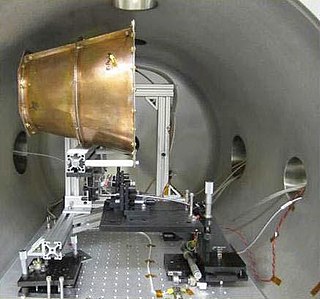 W
WEmDrive is a concept for a radio frequency (RF) resonant cavity thruster that is claimed to have potential applications as a spacecraft thruster. It is purported to generate thrust by reflecting microwaves internally in the device, in violation of the law of conservation of momentum and other laws of physics. The device has been often referred to by the media as the Impossible Drive. It was introduced in 2001 by Roger Shawyer.
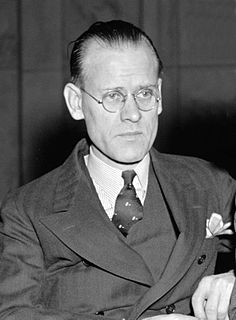 W
WPhilo Taylor Farnsworth was an American inventor and television pioneer. He made many crucial contributions to the early development of all-electronic television. He is best known for his 1927 invention of the first fully functional all-electronic image pickup device, the image dissector, as well as the first fully functional and complete all-electronic television system. Farnsworth developed a television system complete with receiver and camera—which he produced commercially through the Farnsworth Television and Radio Corporation from 1938 to 1951, in Fort Wayne, Indiana.
 W
WThe Graphics Interchange Format is a bitmap image format that was developed by a team at the online services provider CompuServe led by American computer scientist Steve Wilhite and released on 15 June 1987. It has since come into widespread usage on the World Wide Web due to its wide support and portability between applications and operating systems.
 W
WLyman Wiswell Gilmore, Jr. was an aviation pioneer. In Grass Valley, California, he built a steam-powered airplane and claimed that he flew it on May 15, 1902. Due to the requirement of a heavy boiler and the dependency on coal as a power source, the flights would have been unsustainable. Records and evidence relating to his claim were lost in a 1935 hangar fire.
 W
WGordon Gould was an American physicist who is often credited with the invention of the laser.. Gould is best known for his thirty-year fight with the United States Patent and Trademark Office to obtain patents for the laser and related technologies. He also fought with laser manufacturers in court battles to enforce the patents he subsequently did obtain.
 W
WElisha Gray was an American electrical engineer who co-founded the Western Electric Manufacturing Company. Gray is best known for his development of a telephone prototype in 1876 in Highland Park, Illinois. Some recent authors have argued that Gray should be considered the true inventor of the telephone because Alexander Graham Bell allegedly stole the idea of the liquid transmitter from him. Although Gray had been using liquid transmitters in his telephone experiments for more than two years previously, Bell's telephone patent was upheld in numerous court decisions.
 W
WGuanahaní is an island in the Bahamas that was the first land in the New World sighted and visited by Christopher Columbus' first voyage, on 12 October 1492. It is a bean-shaped island that Columbus changed from its native Taíno name to San Salvador. Guanahaní has traditionally been identified with Watlings Island, which was officially renamed San Salvador Island in 1925 as a result, but modern scholars are divided on the accuracy of this identification and several alternative candidates in and around the southern Bahamas have been proposed as well.
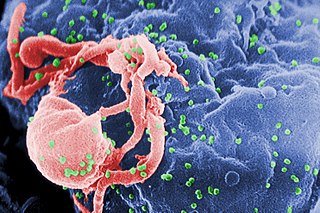 W
WThe human immunodeficiency viruses (HIV) are two species of Lentivirus that infect humans. Over time, they cause acquired immunodeficiency syndrome (AIDS), a condition in which progressive failure of the immune system allows life-threatening opportunistic infections and cancers to thrive. Without treatment, average survival time after infection with HIV is estimated to be 9 to 11 years, depending on the HIV subtype. In most cases, HIV is a sexually transmitted infection and occurs by contact with or transfer of blood, pre-ejaculate, semen, and vaginal fluids. Research has shown that HIV is untransmittable through condomless sexual intercourse if the HIV-positive partner has a consistently undetectable viral load. Non-sexual transmission can occur from an infected mother to her infant during pregnancy, during childbirth by exposure to her blood or vaginal fluid, and through breast milk. Within these bodily fluids, HIV is present as both free virus particles and virus within infected immune cells.
 W
WAn incandescent light bulb, incandescent lamp or incandescent light globe is an electric light with a wire filament heated until it glows. The filament is enclosed in a glass bulb with a vacuum or inert gas to protect the filament from oxidation. Current is supplied to the filament by terminals or wires embedded in the glass. A bulb socket provides mechanical support and electrical connections.
 W
WThe Innovation Act of the 114th Congress is a bill that would change the rules and regulations surrounding patent infringement lawsuits in an attempt to reduce enforceability of patents.
 W
WThe Innovation Act of the 113th Congress is a bill that would change the rules and regulations surrounding patent infringement lawsuits in an attempt to reduce patent lawsuits.
 W
WAn integrated circuit or monolithic integrated circuit is a set of electronic circuits on one small flat piece of semiconductor material, usually silicon. Large numbers of tiny MOSFETs integrate into a small chip. This results in circuits that are orders of magnitude smaller, faster, and less expensive than those constructed of discrete electronic components. The IC's mass production capability, reliability, and building-block approach to integrated circuit design has ensured the rapid adoption of standardized ICs in place of designs using discrete transistors. ICs are now used in virtually all electronic equipment and have revolutionized the world of electronics. Computers, mobile phones, and other digital home appliances are now inextricable parts of the structure of modern societies, made possible by the small size and low cost of ICs such as modern computer processors and microcontrollers.
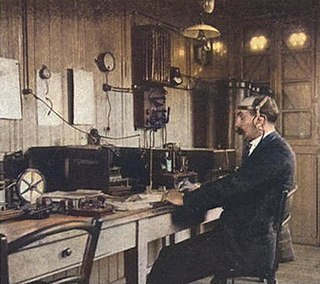 W
WThe invention of radio communication spanned many decades of establishing theoretical underpinnings, discovery and experimental investigation of radio waves, and engineering and technical developments related to their transmission and detection. This scientific work preceded Guglielmo Marconi's use of radio waves in a wireless communication system.
 W
WThe invention of the telephone was the culmination of work done by many individuals, and led to an array of lawsuits relating to the patent claims of several individuals and numerous companies.
 W
WA jet engine is a type of reaction engine discharging a fast-moving jet that generates thrust by jet propulsion. While this broad definition can include rocket, water jet, and hybrid propulsion, the term jet engine typically refers to an internal combustion airbreathing jet engine such as a turbojet, turbofan, ramjet, or pulse jet. In general, jet engines are internal combustion engines.
 W
WJPEG or JPG is a commonly used method of lossy compression for digital images, particularly for those images produced by digital photography. The degree of compression can be adjusted, allowing a selectable trade-off between storage size and image quality. JPEG typically achieves 10:1 compression with little perceptible loss in image quality. Since its introduction in 1992, JPEG has been the most widely used image compression standard in the world, and the most widely used digital image format, with several billion JPEG images produced every day as of 2015.
 W
WRobert William Kearns was an American engineer, educator and inventor who invented the most common intermittent windshield wiper systems used on most automobiles from 1969 to the present. His first patent for the invention was filed on December 1, 1964, after a few previous designs by other inventors had failed to gain any traction in manufacturing.
 W
WLouis Aimé Augustin Le Prince was a French artist and the inventor of an early motion-picture camera, possibly the first person to shoot a moving picture sequence using a single lens camera and a strip of (paper) film. He has been credited as "Father of Cinematography", but his work did not influence the commercial development of cinema—owing at least in part to the great secrecy surrounding it.
 W
WThe calculus controversy was an argument between the mathematicians Isaac Newton and Gottfried Wilhelm Leibniz over who had first invented calculus. The question was a major intellectual controversy, which began simmering in 1699 and broke out in full force in 1711. Leibniz had published his work first, but Newton's supporters accused Leibniz of plagiarizing Newton's unpublished ideas. Leibniz died in disfavor in 1716 after his patron, the Elector Georg Ludwig of Hanover, became King George I of Great Britain in 1714. The modern consensus is that the two men developed their ideas independently.
 W
WMagnetic resonance imaging (MRI) is a medical imaging technique used in radiology to form pictures of the anatomy and the physiological processes of the body. MRI scanners use strong magnetic fields, magnetic field gradients, and radio waves to generate images of the organs in the body. MRI does not involve X-rays or the use of ionizing radiation, which distinguishes it from CT and PET scans. MRI is a medical application of nuclear magnetic resonance (NMR) which can also be used for imaging in other NMR applications, such as NMR spectroscopy.
 W
WInnocenzo Vincenzo Bartolomeo Luigi Carlo Manzetti was an Italian inventor born in Aosta. Following his primary school studies he went to the Jesuit-run Saint Bénin Boarding School and then on to Turin where he was awarded a diploma in land surveying before returning to Aosta.
 W
WAntonio Santi Giuseppe Meucci was an Italian inventor and an associate of Giuseppe Garibaldi, a major political figure in the history of Italy. Meucci is best known for developing a voice-communication apparatus that several sources credit as the first telephone.
 W
WAlexander Fedorovich Mozhaysky was an admiral in the Imperial Russian Navy, aviation pioneer, researcher and designer of heavier-than-air craft.
 W
WMozhaysky's airplane was an experimental Russian airplane designed and built by a naval officer, Alexander Mozhaysky. Powered by two steam engines, the monoplane design reputedly made a powered take off assisted by the use of a ramp, flying between 20–30 m (66–98 ft) near Krasnoye Selo, Russia in 1884.
 W
WThe planet Neptune was mathematically predicted before it was directly observed. With a prediction by Urbain Le Verrier, telescopic observations confirming the existence of a major planet were made on the night of September 23–24, 1846, at the Berlin Observatory, by astronomer Johann Gottfried Galle, working from Le Verrier's calculations. It was a sensational moment of 19th-century science, and dramatic confirmation of Newtonian gravitational theory. In François Arago's apt phrase, Le Verrier had discovered a planet "with the point of his pen".
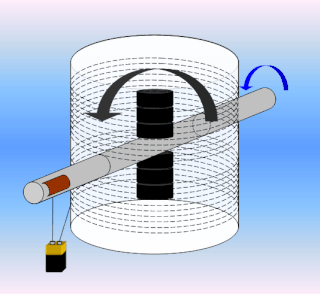 W
WNewman's Energy Machine was a DC motor which the inventor, Joseph Newman, claimed to produce mechanical power exceeding the electrical power being supplied to it. In 1979, Newman attempted to patent the device, but was rejected by the United States Patent Office as being a perpetual motion machine. When the rejection was later appealed, the United States district court requested that Newman's machine be tested by the National Bureau of Standards (NBS). The NBS concluded in June 1986 that output power was not greater than the input. Thus, the patent was again denied. The scientific community has rejected Newman's ideas about electricity and magnetism as pseudoscientific and his claims as false.
 W
WRobert Edwin Peary Sr. was an American explorer and officer in the United States Navy who made several expeditions to the Arctic in the late 19th and early 20th centuries. He is best known for, in April 1909, leading an expedition that claimed to be the first to have reached the geographic North Pole. Explorer Matthew Henson, part of the expedition, is thought to have reached what they believed to be the North Pole narrowly before Peary.
 W
WJohann Philipp Reis was a self-taught German scientist and inventor. In 1861, he constructed the first make-and-break telephone, today called the Reis telephone.
 W
WGeorge Baldwin Selden was a patent lawyer and inventor who was granted a U.S. patent for an automobile in 1895.
 W
WA telephone is a telecommunications device that permits two or more users to conduct a conversation when they are too far apart to be heard directly. A telephone converts sound, typically and most efficiently the human voice, into electronic signals that are transmitted via cables and other communication channels to another telephone which reproduces the sound to the receiving user. The term is derived from Greek: τῆλε and φωνή, together meaning distant voice. A common short form of the term is phone, which came into use almost immediately after the first patent was issued.
 W
WGustave Albin Whitehead was an aviation pioneer who emigrated from Germany to the United States where he designed and built gliders, flying machines, and engines between 1897 and 1915. Controversy surrounds published accounts and Whitehead's own claims that he flew a powered machine successfully several times in 1901 and 1902, predating the first flights by the Wright Brothers in 1903.
 W
WHarry Whitney was an American sportsman, adventurer, and author. He traveled to northern Greenland with Robert Peary in 1908, staying over the winter with the Inughuit at Etah and Annoatok. In the spring of 1909 Whitney found himself at the center of the controversy between Frederick Cook and Peary over who had reached the North Pole first. A year after his return, he published a book on the trip. He is sometimes confused with his contemporary Harry Payne Whitney, who was no relation.
 W
WThe Wright brothers – Orville and Wilbur – were two American aviation pioneers generally credited with inventing, building, and flying the world's first successful motor-operated airplane. They made the first controlled, sustained flight of a powered, heavier-than-air aircraft with the Wright Flyer on December 17, 1903, 4 mi (6 km) south of Kitty Hawk, North Carolina. The brothers were also the first to invent aircraft controls that made fixed-wing powered flight possible.
 W
WThe Wright brothers patent war centers on the patent they received for their method of an airplane's flight control. The Wright brothers were two Americans who are widely credited with inventing and building the world's first flyable airplane and making the first controlled, powered and sustained heavier-than-air human flight on December 17, 1903.
 W
WVladimir Kosmich Zworykin was a Russian-American inventor, engineer, and pioneer of television technology. Zworykin invented a television transmitting and receiving system employing cathode ray tubes. He played a role in the practical development of television from the early thirties, including charge storage-type tubes, infrared image tubes and the electron microscope.